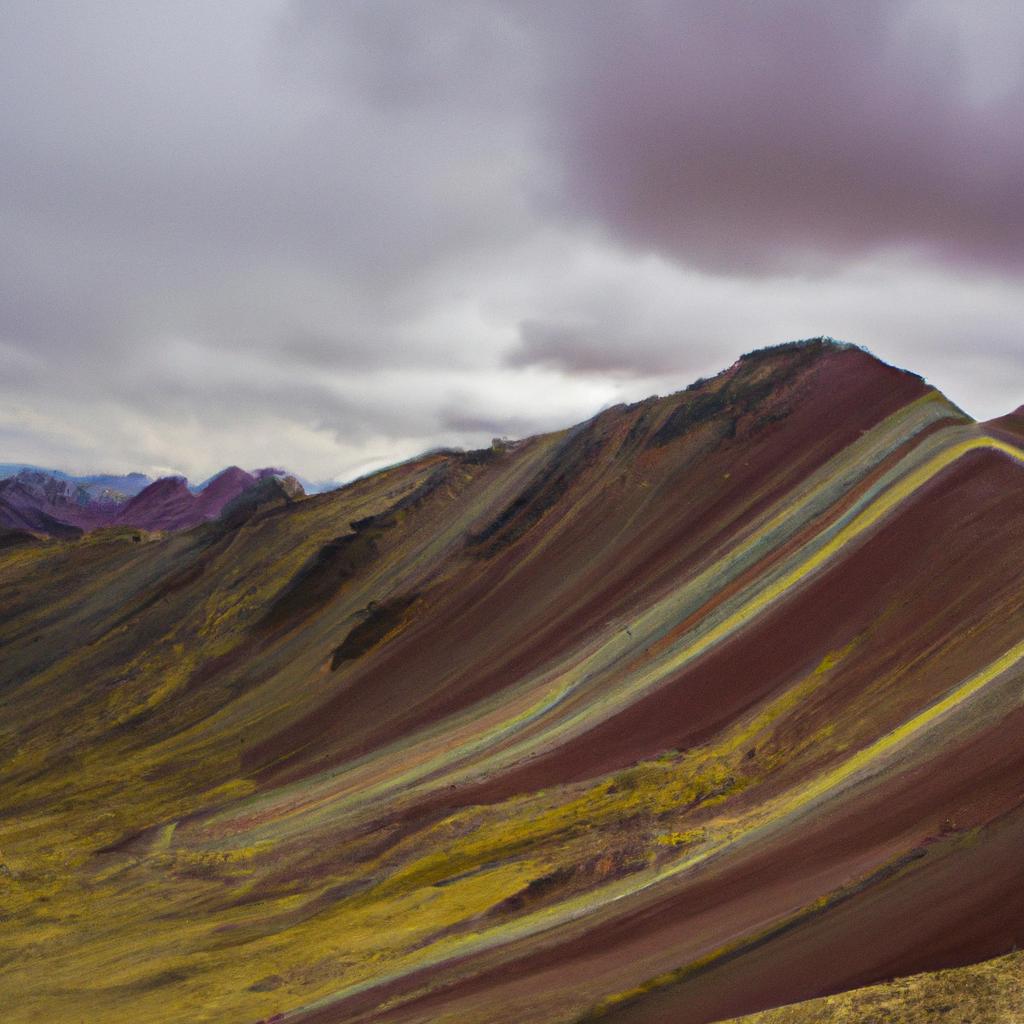Peru’s Rainbow Mountains have captivated the hearts of travelers seeking awe-inspiring natural landscapes. These geological masterpieces showcase the vibrant colors of the rainbow, making them a true wonder of nature. Join me as we dive into the beauty and significance of Peru’s Rainbow Mountains.
Unveiling the Geological History and Formation
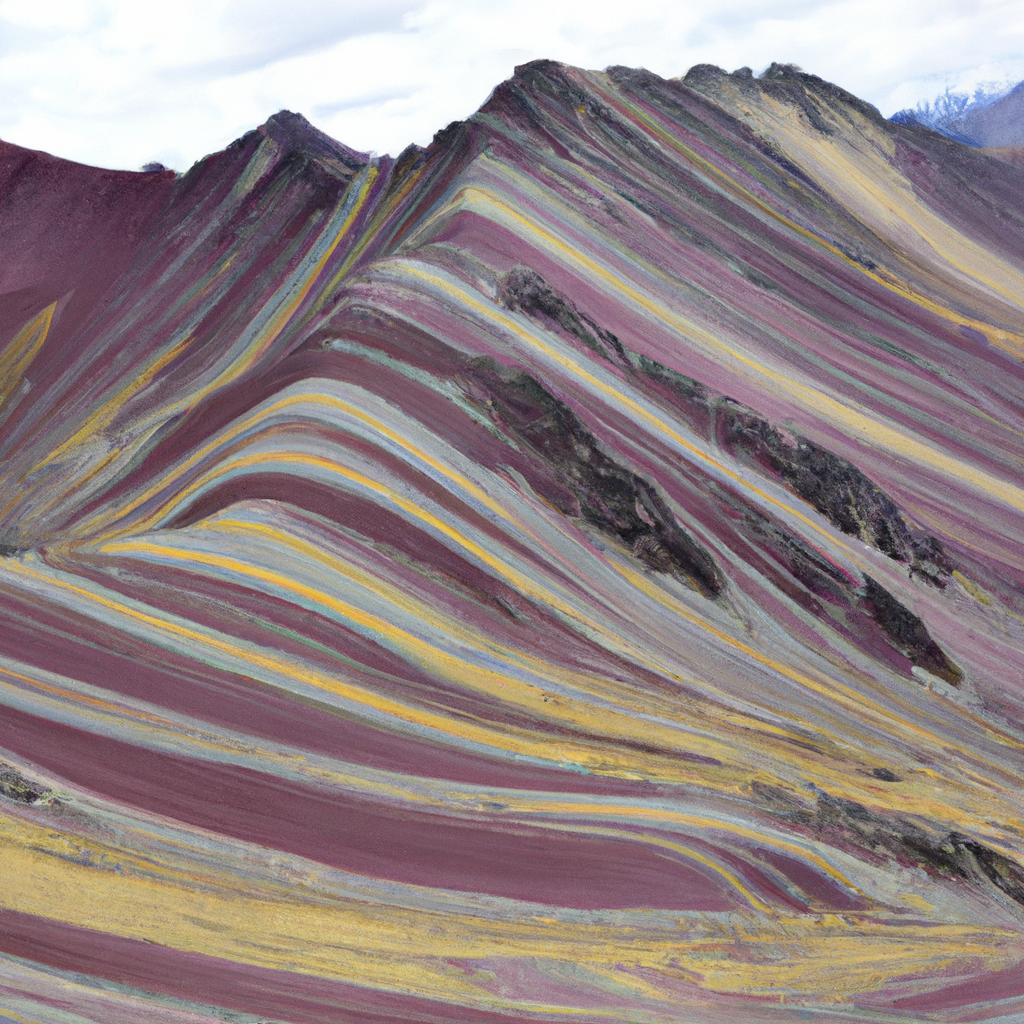
Image source: toolack.com
The Rainbow Mountains, also known as Vinicunca or Montaña de Siete Colores, are nestled in the Andes Mountains of Peru. These mountains remained hidden for centuries beneath layers of ice and snow. However, rising temperatures have caused the ice and snow to melt away, revealing the magnificent Rainbow Mountains we see today.
The Rainbow Mountains consist of layers of sedimentary rock that formed over millions of years. Each layer’s mineral composition gives rise to the striking colors, ranging from vivid red and orange to serene green and blue. Iron oxide, copper sulfate, and various other minerals contribute to this breathtaking display of color.
Factors such as tectonic uplift, erosion, and weathering have all played a role in the formation of the Rainbow Mountains. The collision of tectonic plates during the Cenozoic Era led to the uplift of the Andes and the subsequent formation of the Rainbow Mountains. This ongoing geological process has sculpted the exceptional landscape that continues to mesmerize visitors.
Embracing the Abundance of Biodiversity and Ecological Significance
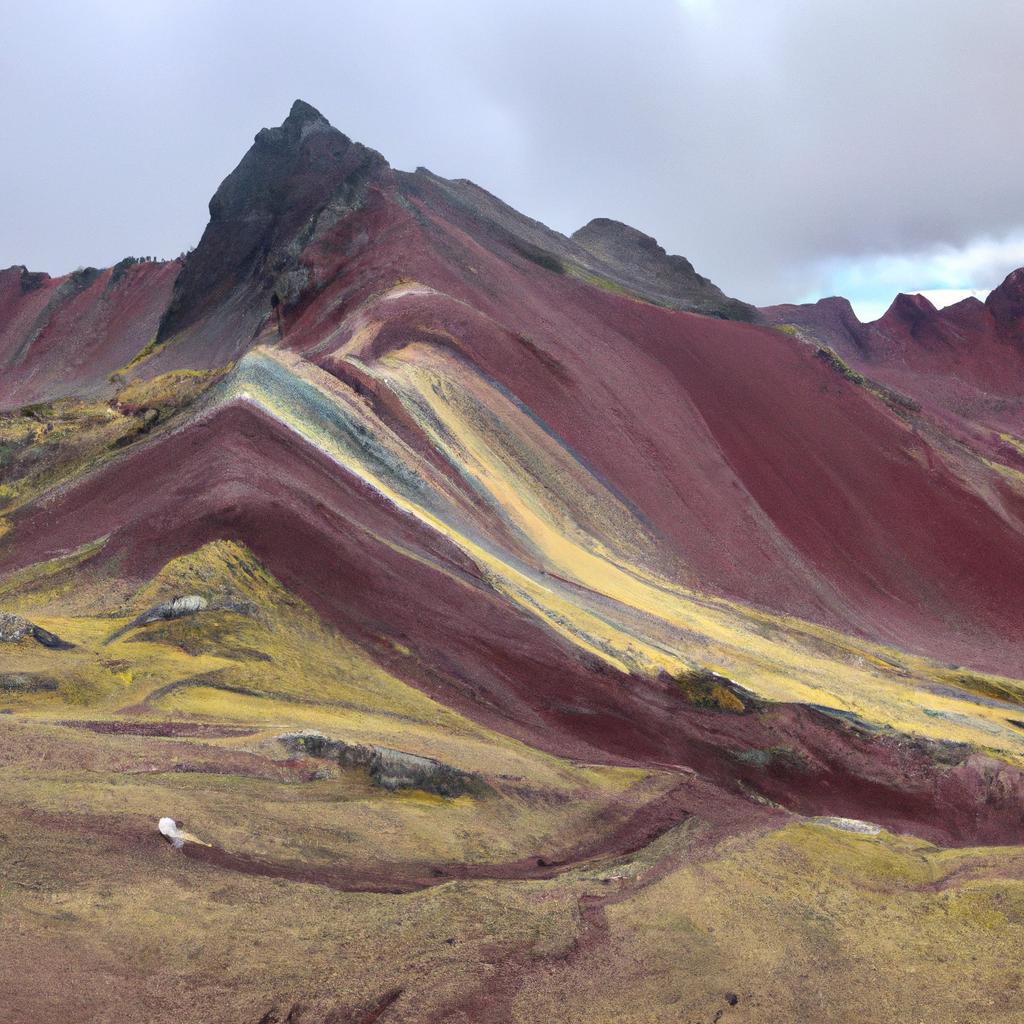
Image source: toolack.com
Beyond their geological allure, the Rainbow Mountains house a remarkable ecosystem. They provide a habitat for a diverse range of plant and animal species, some of which are found exclusively in this region. Let’s explore the biodiversity and ecological significance of these majestic mountains.
The Rainbow Mountains are adorned with a variety of flora, including the towering Puya Raimondii, a bromeliad species that can reach heights of up to 30 feet. Cacti and grasses also thrive in this environment. As for fauna, the Rainbow Mountains are home to magnificent avian species like the Andean Condor, as well as mammals such as the vicuña, a South American camelid.
The unique ecosystem of the Rainbow Mountains is a testament to nature’s resilience. The harsh environment, characterized by high altitude, extreme temperatures, and strong winds, has fostered the adaptation of plant and animal life. Despite the challenges, a delicate balance has been achieved, resulting in a truly exceptional ecosystem.
Moreover, the Rainbow Mountains play a vital role in the conservation of biodiversity. This area is home to various endemic species that exist nowhere else in the world. Conservation efforts are instrumental in preserving the natural beauty and ecological significance of the Rainbow Mountains and the surrounding areas, including the Ausangate mountain range and the Vilcanota River Basin.
Nurturing Cultural Identity and Traditions
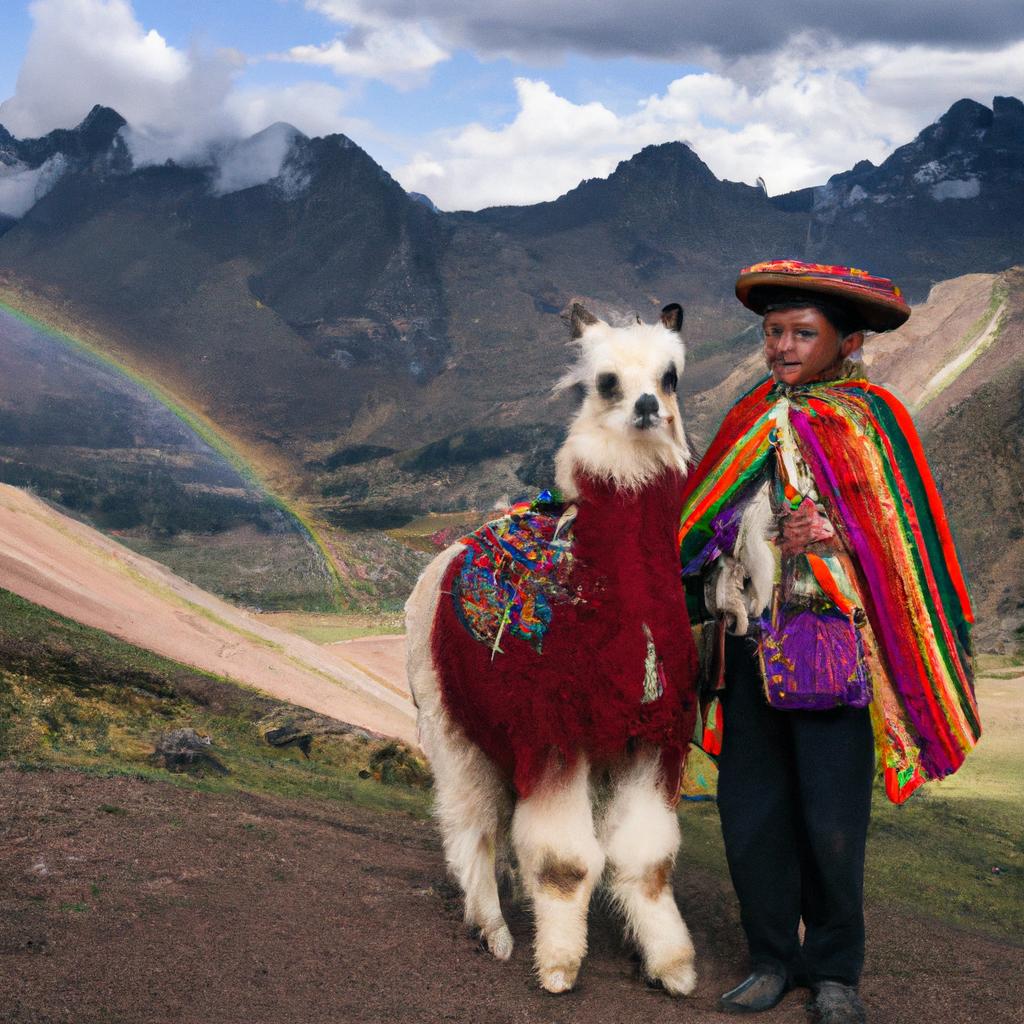
Image source: toolack.com
The Rainbow Mountains hold immense cultural significance for the indigenous communities residing in the Andes Mountains. These communities, known as the Quechua people, have shaped the region’s rich history and culture. The Rainbow Mountains have become a symbol deeply ingrained in their cultural identity.
The Quechua people possess a profound connection to the land and nature, and they regard the Rainbow Mountains as a sacred place. They believe that these mountains are inhabited by spirits and deities. As a result, they perform rituals and ceremonies to honor and pay tribute to these spiritual entities. One such ritual is the payment to the earth, where offerings are made in exchange for an abundant harvest.
The Rainbow Mountains are also a site of pilgrimage for the Quechua people. They embark on journeys to seek guidance and blessings from the spirits residing in the mountains. These pilgrimages are often accompanied by traditional music and dance, further enriching the cultural significance of the Rainbow Mountains.
The Rainbow Mountains serve as a source of cultural pride and economic sustenance for the local communities. Guided tours and the sale of traditional handicrafts allow visitors to engage with the vibrant culture and traditions of the Quechua people.
Embarking on a Memorable Journey
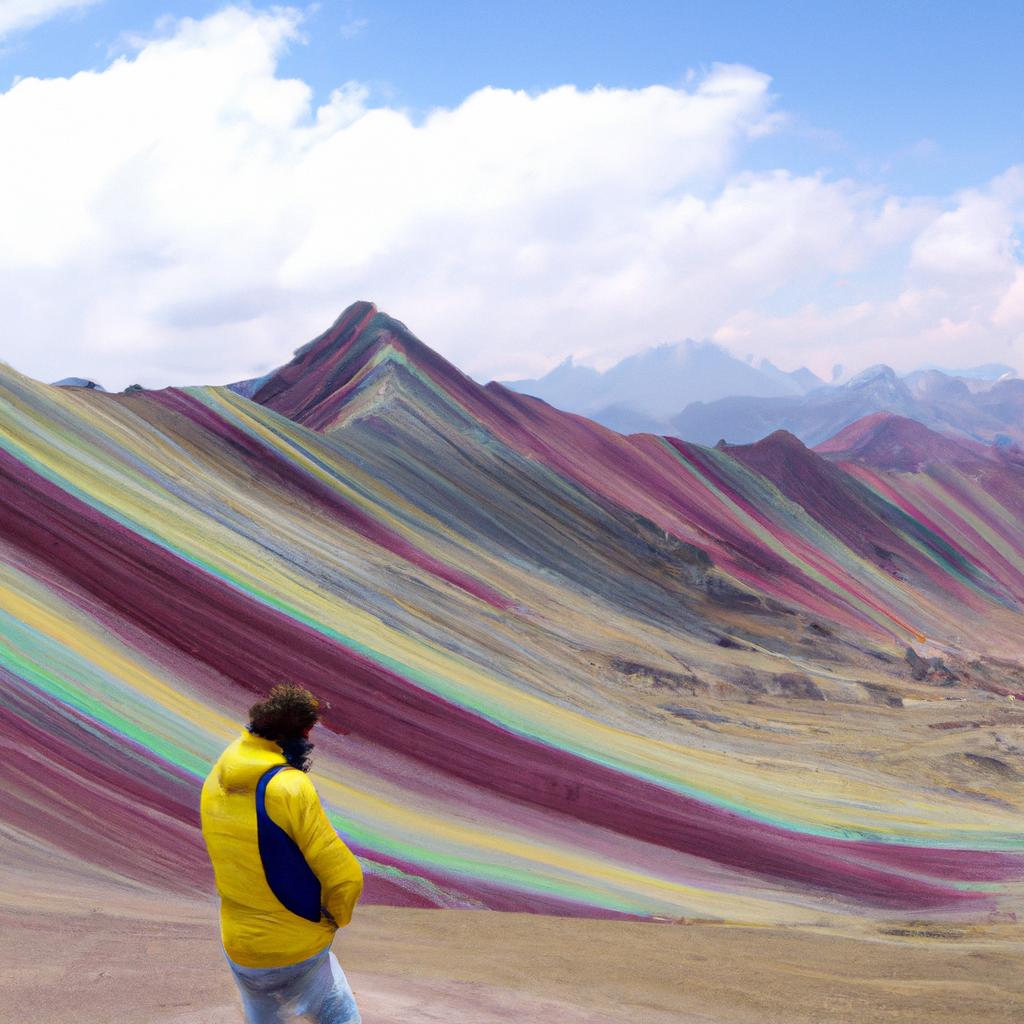
Image source: toolack.com
Visiting the Rainbow Mountains in Peru is an unforgettable adventure waiting to unfold. To make the most of your experience, here are some essential details:
Best Time to Visit:
Plan your trip between April and October, the dry season in Peru. During this period, the weather is pleasant, providing optimal conditions to enjoy the mesmerizing views of the Rainbow Mountains. May to September is the peak season, so it’s advisable to book your trip in advance.
How to Get There:
The Rainbow Mountains are located in the Cusco region, approximately three hours away from the city of Cusco. Guided tours offer transportation from Cusco to the mountains and back. These tours provide knowledgeable guides who will share the history and significance of the Rainbow Mountains as you journey through this extraordinary landscape.
Activities to Enjoy:
Hiking is the favored activity for exploring the Rainbow Mountains. The hike is challenging, so being in good physical condition is recommended. For those who prefer a more leisurely experience, horseback rides to the mountaintop are available, offering a unique perspective of the stunning surroundings.
In addition to hiking and horseback riding, take the opportunity to immerse yourself in the vibrant local communities surrounding the Rainbow Mountains. Learn about their culture, traditions, and savor the delicious local cuisine, featuring Andean potatoes, quinoa, and alpaca meat.
Cherishing the Magic of Peru’s Rainbow Mountains
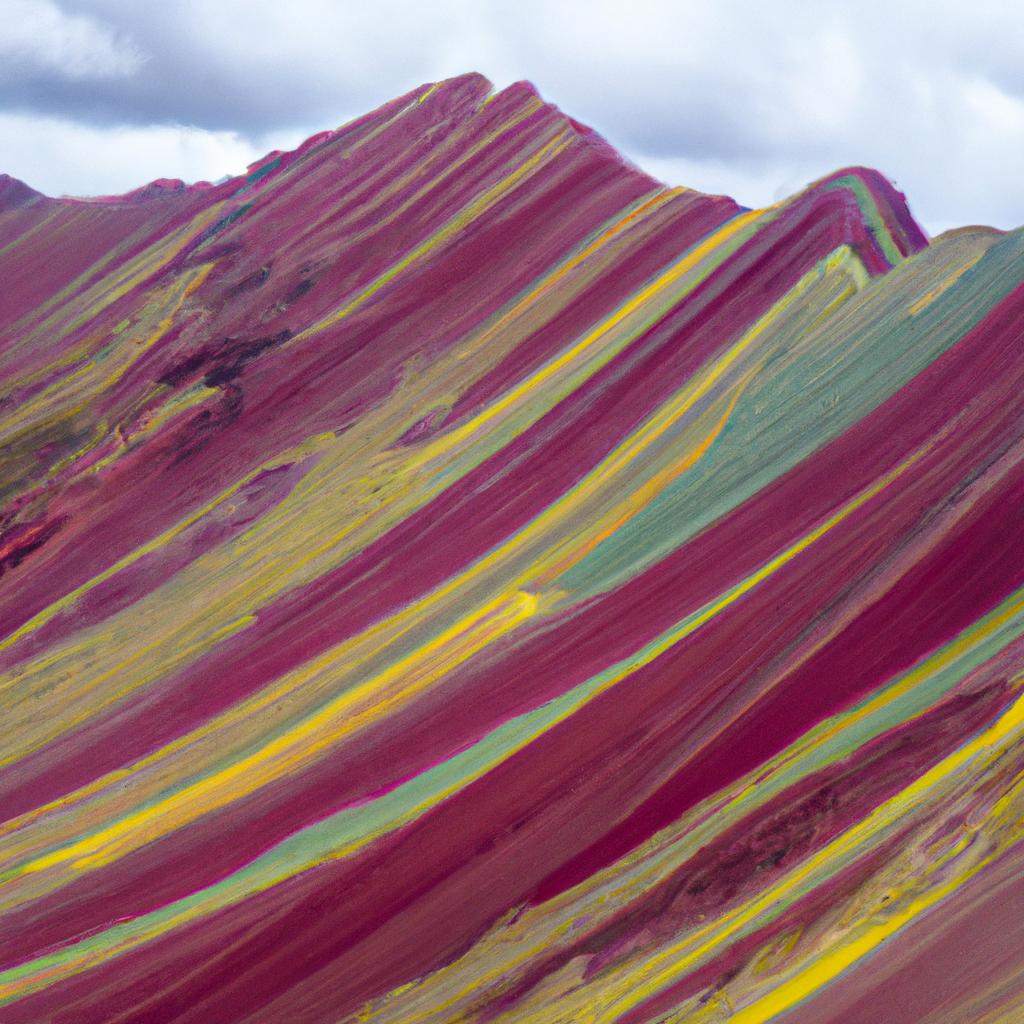
Image source: toolack.com
Peru’s Rainbow Mountains offer an extraordinary experience for travelers and locals alike. Their breathtaking beauty, rich geological history, cultural significance, and ecological vitality make them an unmissable destination. By respecting the local culture and environment, you can ensure that the legacy of the Rainbow Mountains endures.
So, add the Rainbow Mountains to your travel bucket list and prepare for an unforgettable journey. Immerse yourself in the vibrant hues, embrace the cultural heritage, and relish the wonders of Peru’s Rainbow Mountains. Visit TooLacks to start planning your adventure today.
